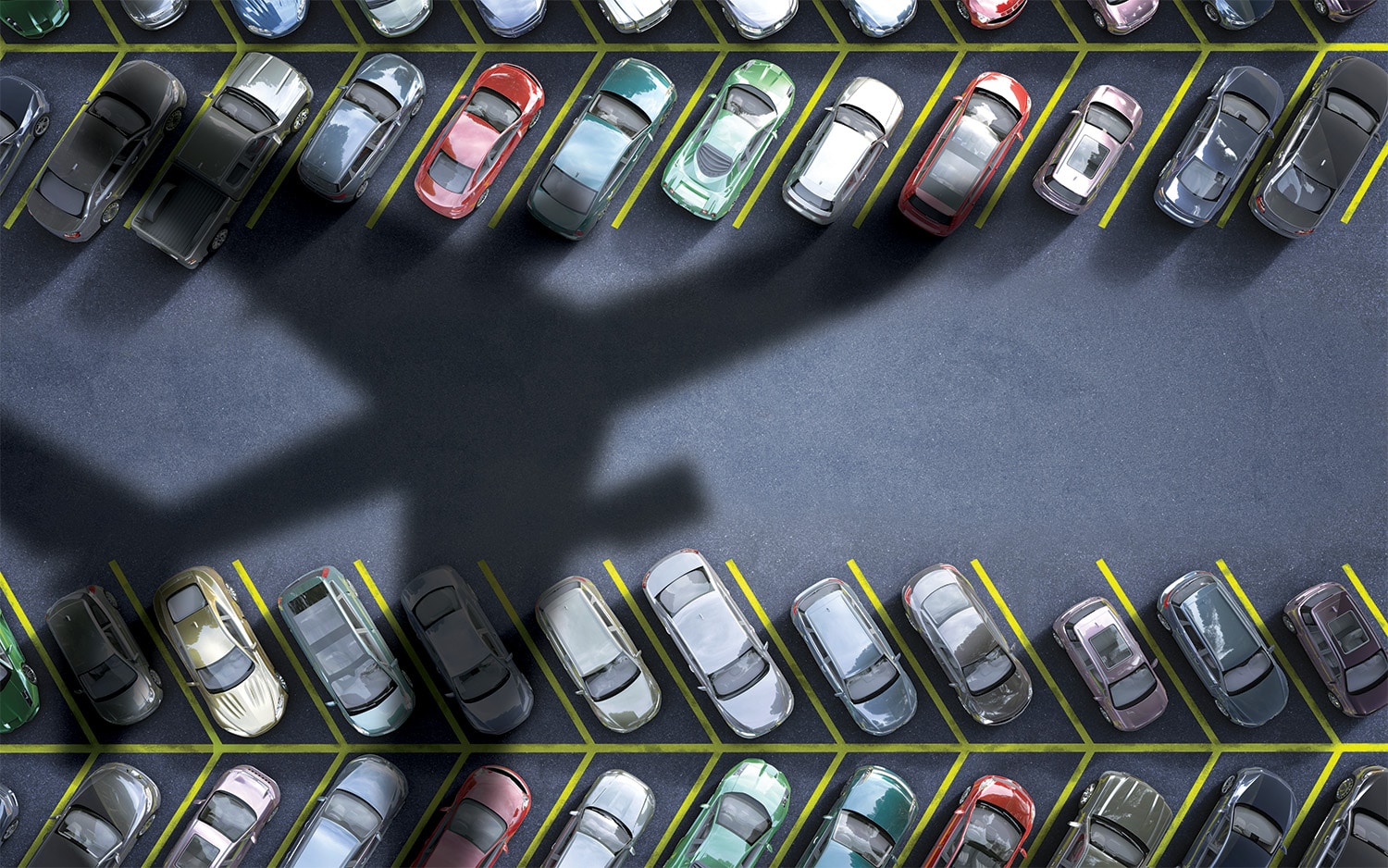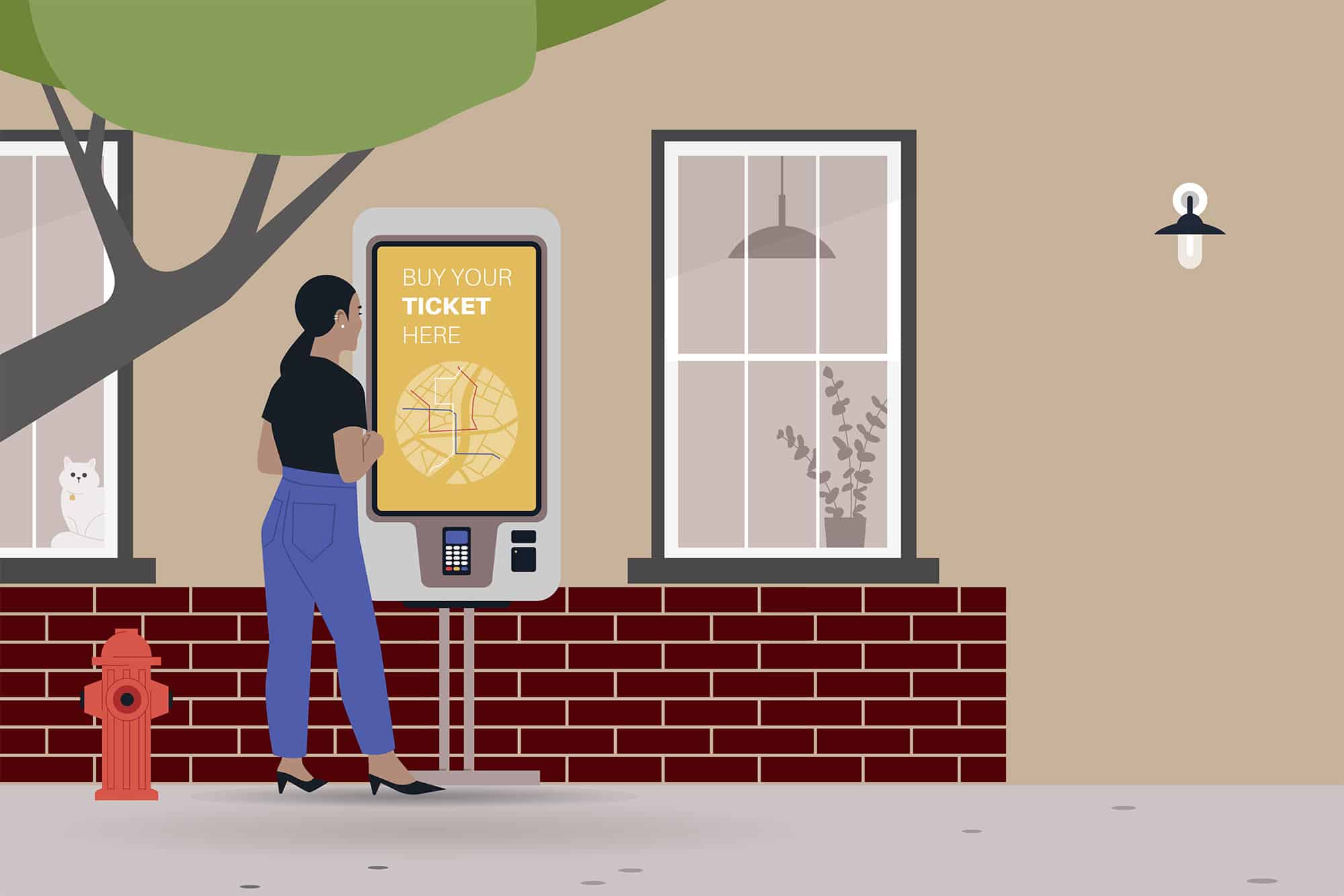
More…True Stories from the Quirky World of Parking
A Review of the Newest Book from Larry J Cohen
Share:
Share:

For nearly two years, we have shared an experience that has reshaped life as we know it. From the initial stay-at-home orders that brought the parking industry to a crawl to the “new normal” of hybrid schedules and routinely working from home, we’ve experienced a significant shift in travel behavior. Throughout this process, changes have occurred that affect expectations of how to interact with the parking options provided by healthcare and higher education campuses. The pandemic has brought about a shift in the parking management strategies of universities and hospitals throughout the United States. The following article explores the expectations of a new dynamic world of flexible parking options that are likely here to stay.
Kimley-Horn conducted a nationwide survey of universities and hospitals representing the interest of nearly 800,000 parkers. Institutions from 21 states and the District of Columbia are represented in the survey (Figure 1). On average, each campus has more than 15,000 parking spaces. Figure 2 illustrates the distribution of users.
Most of our country’s large institutions charge for parking by issuing traditional monthly or annual parking permits for employees and students. The primary reason cited for this method is that it is easily managed by the institution. This permitting model typically allows unlimited parking on the campus and encourages people to drive and park. Bulk purchasing of parking requires parkers to pay the monthly or annual permit rate, regardless of their frequency of use. This permitting practice results in a sunk cost for those that park on campus less frequently. Additionally, in the event of cancelations or adjustments to the semester or work schedule, pre-purchasing parking can result in costly reimbursements by parking offices, which many institutions experienced during the early stages of the pandemic.
Another crucial component of managing large parking inventories is assigning permitted users. The approach to assigning permits varies among universities and hospitals. Before the pandemic, 61% of respondents offered monthly or annual permits that assigned users to a designated parking facility. Only 14% had open campuses that required parkers to search for parking. Most campuses have several permit assignment methods applied to various user groups, as shown in Figure 3. As indicated, restricting access to smaller zones or facilities is commonplace in an institutional setting.
As shown in Figure 4, cost-effectiveness, proximity, and availability/reliability of parking are the primary customer experience attributes. Each plays an essential role in user satisfaction. Typically, users desire parking that comes at a low cost, is near their destination, and is consistently available. It is challenging to balance these attributes, especially on campuses that are near capacity. In environments where peak parking demand is >80 to 90% of the capacity, parkers must choose between two of these three attributes.
Because users want all three attributes in an ideal parking environment, institutions are seeking ways to increase user satisfaction in a dynamic real-world scenario. In addition, many institutions find themselves competing for workforce talent, especially after the staffing shortages brought on by the pandemic, further reinforcing the need to provide an exceptional customer experience.
Typically, user satisfaction is tied to the ease of finding a parking space in the desired location. The survey results support the hypothesis that user satisfaction drops as parking availability becomes limited. Figure 5 illustrates this by comparing the parking demands (X-axis) to the user experience (Y-axis). Institutions should strive to remain in the green or yellow zones, which is influenced by the type of permit allocation structure deployed.
Figure 6 shows customer satisfaction levels by permit type per the survey results. The highest levels of satisfaction stem from location-specific permit allocation models. Compared to less specific permitting methods, location-specific permitting enables easier tracking and management of parking behaviors, which provides a sense of reliability and consistency for users. This is particularly true as overall parking demand increases.
While traditional parking permitting practices have been successful for years, the pandemic has flipped the script. Students and employees are traveling to campus less often as hybrid schedules prevail. The future undoubtedly will include some level of reliance on virtual meetings to augment in-person gatherings. Parking permit holders recognize that long-term permits have an associated sunk cost, and they want flexibility in their parking options. A shift to daily parking significantly impacts parking pricing and allocation models, and intentional decision-making is needed to ensure financial and experiential success within institutional environments.
In a post-pandemic world, the travel behavior of employees and students is still unknown; however, we are beginning to understand that customers desire more permanent flexibility in their schedules. Most universities and hospitals began operating at pre-pandemic levels in Fall 2021 but coming to the office and class full-time five days per week will likely never return.
In 2019, Kimley-Horn coordinated with Vanderbilt University to assess commuter travel behavior. This 20-day study revealed that students and employees only parked on campus for an average of 14 out of 20 days. Increased opportunities to work from home will likely decrease the number of days commuters park on campus. Furthermore, healthcare shift workers can work as little as 10 to 12 days per month. According to the survey, because of the pandemic, 75% of the respondents are interested in identifying strategies to implement flexible permitting options, such as daily parking permits.
One flexible model is a daily parking program. Daily parking eliminates the sunk cost associated with longer-term permits and requires users to make a daily commuting decision. Three different ways to operationalize a daily parking program are 1) pay-as-you-go, 2) daily self-selection, and 3) pre-arrival reservation.
A pay-as-you-go daily parking program provides access to facilities on an as-needed basis. Each parking session is based on the user’s decision regarding their daily needs. Customers can pay for each parking session directly or receive a bill for the number of parking sessions over a calendar month. Payment can be deducted from the customer’s payroll, enabling the use of pre-tax dollars, or paid directly by the user in the form of a credit card. In a pay-as-you-go program, parkers are often assigned to a specific facility, and their use is tracked using a mobile app or Parking Access and Revenue Control Systems (PARCS) equipment.
A daily self-selection parking program provides the opportunity to park at multiple facilities. Commuters make a daily decision to park at the facility of their choice. This version of daily parking uses a “hunting license” model to enable users to pick their parking spot. Real-time occupancy information facilitates the ease of navigating a daily self-selection parking model and provides availability information to users before entering a facility. This model also pairs nicely with varied pricing by facility depending on demand, better balancing campus-wide parking demand.
A pre-arrival reservation program requires customers to select their preferred parking location and pre-purchase daily parking before arriving on campus. Reservations use real-time occupancy information and parking analytics to determine the number of spaces available at a particular facility. Users are charged for pre-arrival reservations at the time of purchase rather than at the start of their parking session. This allows customers to reserve a parking spot at the desired location, prevents the potential of overselling parking spaces, and prevents operators from losing revenue for reserved spaces.
Introducing a daily parking program requires a blend of tracking, information distribution, and enforcement.
Tracking daily parking transactions can be performed using a mobile app that offers an all-in-one commuter platform or by PARCS equipment connected to a permit database. Each transaction is recorded to assess facility occupancy and to frequently evaluate parking.
Real-time occupancy information is essential for user satisfaction. For daily self-selection and pre-arrival reservations, occupancy information ensures commuters have a parking spot when they arrive. The occupancy information can be communicated using a mobile app or a daily permit purchasing web portal. As parking operations integrate with connected vehicles, parking occupancy information can be pushed to in-vehicle dashboards and navigation systems.
Enforcement officers monitor the use of daily parking facilities and ensure commuters have the appropriate parking rights. For open facilities, enforcement officers can use mobile license plate recognition (LPR) technology to verify that vehicles are properly registered. Enforcement officers also play a crucial role in baselining parking occupancy to calibrate real-time occupancy information.
In a post-pandemic world, parking operators must prepare to accommodate varying parking demand levels. Developing flexible options lets commuters choose the frequency of their parking sessions and avoid the sunken cost associated with monthly and annual permits. Additionally, daily parking programs provide operators with an understanding of users’ travel behaviors, including occupancy, duration, and frequency. This knowledge can provide permitting operators the opportunity to optimize parking assets usage and identify areas where demand can be consolidated.
COVID-19 has profoundly impacted the revenue streams of universities and hospitals. More than 50% of survey respondents reported reduced revenues, ranging from $100,000 to $10,500,000. Furthermore, parking operators had to issue refunds for permits purchased before the pandemic. COVID-19 revealed that traditional financial streams for institutions are brittle. Relying on monthly or annual permit sales can leave institutions ill-prepared for shocks to the parking system. To build a financially resilient parking system, operators should develop a funding reserve to use in unexpected circumstances.
As a part of developing a daily parking program, operators should conduct a pricing study to determine the appropriate daily rate. When introducing a daily parking program, institutions often determine the daily rate by dividing the monthly rate by the number of available parking days in a month. This method is flawed because it doesn’t consider the actual frequency of a commuter parking on campus or their willingness to pay for a daily session. Additionally, dividing the cost of a monthly permit by the number of available parking days can result in decreased revenues if commuters park less. This daily parking rate miscalculation is provided below:
While a $1.00/day rate may seem like a customer benefit, it generates less revenue than a traditional monthly permit. To resolve this, operators should compare their operational expenses to the amount of revenue required to maintain a self-sustaining parking operation. Determining a daily parking rate should be based on an accurate understanding of the value of daily parking and the financial resiliency of the system.
Transitioning from traditional permitting practices to a more flexible, resilient program takes thoughtful implementation and strategic decision-making. With several interconnected elements to consider, each decision point critically impacts the overall sustainability and user satisfaction associated with the program.
The pandemic has had a profound and lasting impact on our day-to-day lives. Post-pandemic life has shown us that healthcare and education remain integral elements sewn into the fabric of our society, as does the desire to drive and park. COVID-19 has revealed a desire for flexibility in our institutional environments, and organizations nationwide are shifting away from charging for parking solely by the month or year as the needs and priorities of patrons have changed. Daily parking programs can provide increased user satisfaction and flexibility to accommodate various levels of parking demand. Institutions operating in a post-pandemic world should embrace the changing priorities and invest in flexible parking programs. Proactive and strategic decision-making around how we view parking can have substantial positive impacts on recruitment, retention, and financial resiliency within institutions. ◆
Jeffrey Elsey, CAPP, PE, LEED AP, is Vice President at Kimley-Horn.
Jeremy Greenwald, AICP, TDM-CP, is a Parking & Mobility Strategy Consultant at Kimley-Horn.

A Review of the Newest Book from Larry J Cohen

Case Study Bringing 24 7 Customer Service to Regina International

Self Service Kiosks and the Democratization of Digital Services
Parking & Mobility is IPMI’s flagship publication, covering the news, trends, analysis, technologies, and people of the parking and mobility industry, and how it affects and influences communities around the world.
| Cookie | Duration | Description |
|---|---|---|
| cookielawinfo-checkbox-advertisement | 1 year | Set by the GDPR Cookie Consent plugin, this cookie is used to record the user consent for the cookies in the "Advertisement" category . |
| cookielawinfo-checkbox-analytics | 11 months | This cookie is set by GDPR Cookie Consent plugin. The cookie is used to store the user consent for the cookies in the category "Analytics". |
| cookielawinfo-checkbox-functional | 11 months | The cookie is set by GDPR cookie consent to record the user consent for the cookies in the category "Functional". |
| cookielawinfo-checkbox-necessary | 11 months | This cookie is set by GDPR Cookie Consent plugin. The cookies is used to store the user consent for the cookies in the category "Necessary". |
| cookielawinfo-checkbox-others | 11 months | This cookie is set by GDPR Cookie Consent plugin. The cookie is used to store the user consent for the cookies in the category "Other. |
| cookielawinfo-checkbox-performance | 11 months | This cookie is set by GDPR Cookie Consent plugin. The cookie is used to store the user consent for the cookies in the category "Performance". |
| CookieLawInfoConsent | 1 year | Records the default button state of the corresponding category & the status of CCPA. It works only in coordination with the primary cookie. |
| elementor | never | This cookie is used by the website's WordPress theme. It allows the website owner to implement or change the website's content in real-time. |
| viewed_cookie_policy | 11 months | The cookie is set by the GDPR Cookie Consent plugin and is used to store whether or not user has consented to the use of cookies. It does not store any personal data. |
| Cookie | Duration | Description |
|---|---|---|
| _ga | 2 years | The _ga cookie, installed by Google Analytics, calculates visitor, session and campaign data and also keeps track of site usage for the site's analytics report. The cookie stores information anonymously and assigns a randomly generated number to recognize unique visitors. |
| _ga_02PMHW8YWC | 2 years | This cookie is installed by Google Analytics. |
| _ga_LC0QJJHM3J | 2 years | This cookie is installed by Google Analytics. |
| _ga_V9KYTSBYT2 | 2 years | This cookie is installed by Google Analytics. |
| iutk | 5 months 27 days | This cookie is used by Issuu analytic system to gather information regarding visitor activity on Issuu products. |
| Cookie | Duration | Description |
|---|---|---|
| mc | 1 year 1 month | Quantserve sets the mc cookie to anonymously track user behaviour on the website. |
| Cookie | Duration | Description |
|---|---|---|
| ultp_view_1052 | 1 day | No description |
| ultp_view_1058 | 1 day | No description |
| ultp_view_1060 | 1 day | No description |
| ultp_view_1064 | 1 day | No description |
| ultp_view_1068 | 1 day | No description |
| ultp_view_1070 | 1 day | No description |
| ultp_view_1072 | 1 day | No description |
| ultp_view_1078 | 1 day | No description |
| ultp_view_1082 | 1 day | No description |
| ultp_view_1088 | 1 day | No description |
| ultp_view_1100 | 1 day | No description |
| ultp_view_1103 | 1 day | No description |
| ultp_view_1114 | 1 day | No description |
| ultp_view_1118 | 1 day | No description |
| ultp_view_1122 | 1 day | No description |
| ultp_view_1125 | 1 day | No description |
| ultp_view_1130 | 1 day | No description |
| ultp_view_1132 | 1 day | No description |
| ultp_view_1135 | 1 day | No description |
| ultp_view_1541 | 1 day | No description |
| ultp_view_1554 | 1 day | No description |
| ultp_view_1557 | 1 day | No description |
| ultp_view_1560 | 1 day | No description |
| ultp_view_1563 | 1 day | No description |
| ultp_view_1568 | 1 day | No description |
| ultp_view_1572 | 1 day | No description |
| ultp_view_1576 | 1 day | No description |
| ultp_view_1580 | 1 day | No description |
| ultp_view_2305 | 1 day | No description |
| ultp_view_2321 | 1 day | No description |
| ultp_view_2338 | 1 day | No description |
| ultp_view_2342 | 1 day | No description |
| ultp_view_259 | 1 day | No description |
| ultp_view_270 | 1 day | No description |
| ultp_view_275 | 1 day | No description |
| ultp_view_286 | 1 day | No description |
| ultp_view_3074 | 1 day | No description |
| ultp_view_3115 | 1 day | No description |
| ultp_view_3334 | 1 day | No description |
| ultp_view_3336 | 1 day | No description |
| ultp_view_3338 | 1 day | No description |
| ultp_view_3340 | 1 day | No description |
| ultp_view_3346 | 1 day | No description |
| ultp_view_3354 | 1 day | No description |
| ultp_view_3361 | 1 day | No description |
| ultp_view_3367 | 1 day | No description |
| ultp_view_365 | 1 day | No description |
| ultp_view_367 | 1 day | No description |
| ultp_view_38 | 1 day | No description |
| ultp_view_3846 | 1 day | No description |